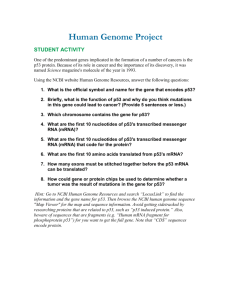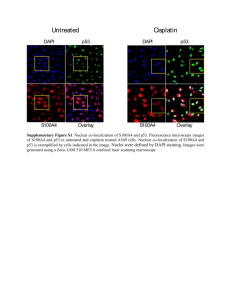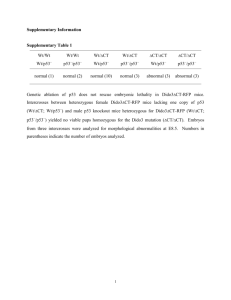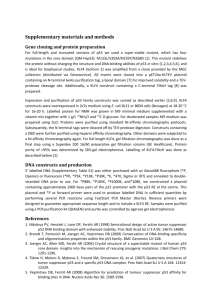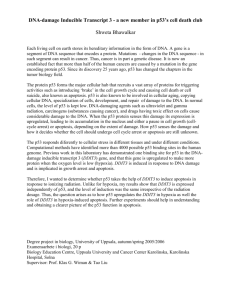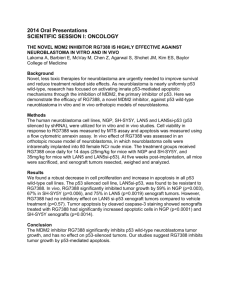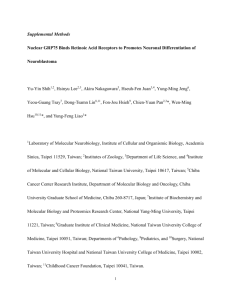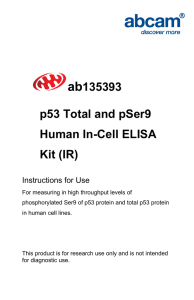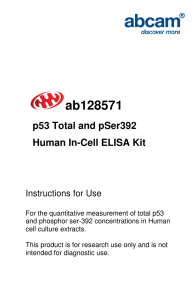Quantitative Reverse Transcription-PCR
advertisement
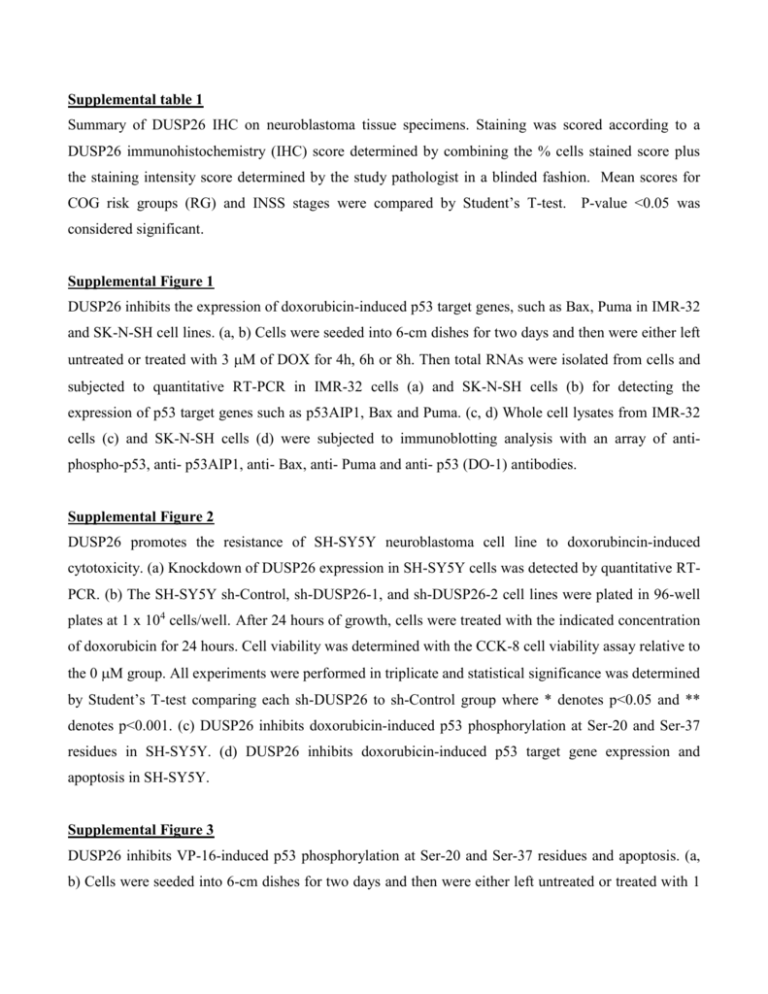
Supplemental table 1 Summary of DUSP26 IHC on neuroblastoma tissue specimens. Staining was scored according to a DUSP26 immunohistochemistry (IHC) score determined by combining the % cells stained score plus the staining intensity score determined by the study pathologist in a blinded fashion. Mean scores for COG risk groups (RG) and INSS stages were compared by Student’s T-test. P-value <0.05 was considered significant. Supplemental Figure 1 DUSP26 inhibits the expression of doxorubicin-induced p53 target genes, such as Bax, Puma in IMR-32 and SK-N-SH cell lines. (a, b) Cells were seeded into 6-cm dishes for two days and then were either left untreated or treated with 3 M of DOX for 4h, 6h or 8h. Then total RNAs were isolated from cells and subjected to quantitative RT-PCR in IMR-32 cells (a) and SK-N-SH cells (b) for detecting the expression of p53 target genes such as p53AIP1, Bax and Puma. (c, d) Whole cell lysates from IMR-32 cells (c) and SK-N-SH cells (d) were subjected to immunoblotting analysis with an array of antiphospho-p53, anti- p53AIP1, anti- Bax, anti- Puma and anti- p53 (DO-1) antibodies. Supplemental Figure 2 DUSP26 promotes the resistance of SH-SY5Y neuroblastoma cell line to doxorubincin-induced cytotoxicity. (a) Knockdown of DUSP26 expression in SH-SY5Y cells was detected by quantitative RTPCR. (b) The SH-SY5Y sh-Control, sh-DUSP26-1, and sh-DUSP26-2 cell lines were plated in 96-well plates at 1 x 104 cells/well. After 24 hours of growth, cells were treated with the indicated concentration of doxorubicin for 24 hours. Cell viability was determined with the CCK-8 cell viability assay relative to the 0 M group. All experiments were performed in triplicate and statistical significance was determined by Student’s T-test comparing each sh-DUSP26 to sh-Control group where * denotes p<0.05 and ** denotes p<0.001. (c) DUSP26 inhibits doxorubicin-induced p53 phosphorylation at Ser-20 and Ser-37 residues in SH-SY5Y. (d) DUSP26 inhibits doxorubicin-induced p53 target gene expression and apoptosis in SH-SY5Y. Supplemental Figure 3 DUSP26 inhibits VP-16-induced p53 phosphorylation at Ser-20 and Ser-37 residues and apoptosis. (a, b) Cells were seeded into 6-cm dishes for two days and then were either left untreated or treated with 1 M (a) or 2.5M (b) of VP-16 for 0h, 4h, 6h or 8h. Then cells were harvested and subjected to immunoblotting analysis with an array of anti-PARP, anti-phospho-p53 and anti-p21 antibodies in IMR32 cells (a) and SK-N-SH cells (b). Supplemental Figure 4 DUSP26 binds to p53. (a) HEK293T were transfected with vector control (-) or FLAG-DUSP26 (+). Endogenous p53 was immunoprecipitated with anti-p53 (DO-1) antibody and immunoblotted with antiFLAG antibody. (b) Recombinant GST-DUSP26-CS protein was incubated with lysate from HEK293T transfected with GFP-p53. Samples were resolved on SDS-PAGE and immunoblotted with anti-p53 (DO-1) antibody. Supplemental Figure 5 DUSP26 proteins can be immunoprecipitated by anti-DUSP26 antibodies. (a) Anti-DUSP26 antibody was used to immunoprecipitate FLAG-DUSP26 transfected in HEK293T. Samples were resolved by SDS-PAGE and immunoblotted with anti-FLAG antibody. (b) SH-SY5Y was plated in culture and harvested for cell lysate after treatment with doxorubicin. Anti-DUSP26 antibody was used to immunoprecipitate endogenous DUSP26 and immunoblotting for endogenous p53 was performed with anti-p53 (DO-1) antibody.


